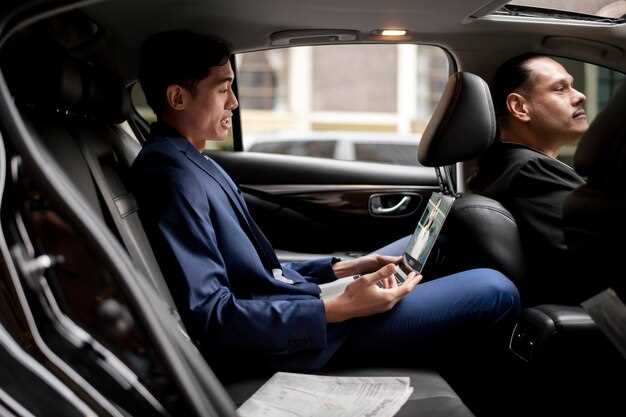
The luxury sedan market has long been characterized by its commitment to comfort, elegance, and technological advancement. As manufacturers aim to provide an exquisite balance between performance and opulence, the rear seat area has become a focal point for automotive engineers and designers. This comparison examines how different models stack up in terms of rear seat comfort, catering to both the needs of passengers and the expectations of discerning buyers.
In evaluating the rear seat comfort of luxury sedans, one must consider various factors that contribute to an uplifting travel experience. These include seat material quality, space optimization, climate control features, and the availability of advanced entertainment systems. Each of these elements plays a crucial role in how passengers perceive comfort and overall satisfaction during their journey.
This article will provide an in-depth analysis of several prominent luxury sedans, highlighting their strengths and weaknesses in rear seat comfort. By utilizing comprehensive metrics and firsthand reviews, potential buyers will gain valuable insights to make informed decisions when choosing their next luxury vehicle. The quest for the ultimate ride experience is on, and the comparison aims to reveal which sedans deliver on their promises of unparalleled comfort.
Material Quality and Adjustability in Rear Seating

The luxury sedan segment is defined not only by performance and design but also by the comfort and experience offered to passengers, particularly in the rear seating area. Material quality plays a crucial role in creating an inviting and luxurious atmosphere. Premium sedans often feature high-grade leather upholstery that is soft to the touch, durable, and resistant to wear. Additionally, some models incorporate exotic materials such as Alcantara or suede, which enhance both aesthetics and tactile comfort.
Adjustability in rear seating is another critical factor influencing passenger comfort. High-end sedans frequently provide features such as reclining seats, adjustable headrests, and even multi-stage heating and cooling capabilities. These adjustments can accommodate various body types and preferences, ensuring an ergonomic seating position for extended journeys. Some manufacturers go further by offering powered adjustments, allowing passengers to find their ideal position with ease.
Moreover, the inclusion of legroom and seat slide functionality contributes significantly to overall comfort. In luxury sedans, rear seats may be designed to slide forward or backward, optimizing space for taller occupants or allowing for more luggage capacity in the trunk. This versatility is often complemented by a center console with controls that allow rear passengers to customize their seating experience, adding to the sense of personalization.
Ultimately, a combination of high-quality materials and thoughtful adjustability transforms the rear seating of luxury sedans into a sanctuary of comfort. Passengers can enjoy a smooth ride without compromising on the quality of their surroundings, setting a high standard in automotive luxury.
Legroom and Headroom Measurements Across Premium Models

In the realm of luxury sedans, the dimensions of legroom and headroom in the rear seats are critical factors influencing passenger comfort. Each premium model in this category offers varying measurements that cater to different preferences and needs.
For instance, the Mercedes-Benz S-Class provides an exceptional rear legroom of 41.4 inches and headroom of 39.5 inches, making it a top contender for those who prioritize spaciousness. The plush interior and ergonomic design enhance the overall comfort, ensuring passengers can stretch and relax during long journeys.
Meanwhile, the BMW 7 Series offers impressive legroom at 42.5 inches and headroom measuring 38.9 inches, establishing it as a favorite among taller individuals. The meticulous attention to detail in the seating arrangements further amplifies the sense of openness within the cabin.
The Audi A8 also competes strongly, with rear legroom of 40.3 inches and headroom reaching 38.5 inches. Audi’s focus on sleek design and functionality is evident in this model, providing an upscale environment while maintaining ample space for passengers.
On the other hand, the Lexus LS presents a different experience, featuring 38.8 inches of legroom and 37.9 inches of headroom. While slightly more compact, the LS compensates with luxurious materials and advanced technology aimed at delivering a serene ride.
Furthermore, the Jaguar XJL boasts rear legroom of 40.3 inches and 38.1 inches of headroom, merging sportiness with refinement. The dynamic design ensures that passengers feel engaged without sacrificing comfort.
In summary, the legroom and headroom measurements across luxury sedans play a pivotal role in defining overall passenger experience. Each model presents a unique blend of space and design, allowing consumers to choose the best fit for their comfort preferences.
Noise Isolation and Overall Ride Experience for Rear Passengers
The noise isolation in luxury sedans is a critical aspect of the overall ride experience for rear passengers. High-end models prioritize sound suppression through advanced engineering solutions, including thicker glass, enhanced insulation materials, and acoustic dampening technologies. These features effectively minimize road and wind noise, creating a serene environment conducive to relaxation and conversation.
Luxury manufacturers often employ double-glazed windows and specifically designed seals that reduce sound intrusion, ensuring that passengers are insulated from external disturbances. Additionally, the placement of the vehicle’s powertrain can influence cabin noise levels; sedans engineered with a focus on rear passenger comfort often feature isolated engine mounts or quieter engine designs to diminish vibrations and auditory distractions.
The ride experience is equally as important, as luxury sedans aim to provide a smooth and cushioned journey. High-quality air suspension systems and adaptive dampers contribute to minimizing road imperfections, allowing for a plush ride that absorbs shocks effectively. Passengers should feel as though they are gliding rather than bouncing over uneven surfaces, which is essential for long journeys where comfort is paramount.
Moreover, seating ergonomics play a significant role in the overall experience. Rear seats in luxury sedans typically offer ample legroom, adjustable headrests, and premium materials that provide both support and comfort. Features such as heated and ventilated seats further enhance the ride experience by catering to passenger preferences in varying climate conditions.
In summary, noise isolation and overall ride experience for rear passengers in luxury sedans are intricately linked. The combination of effective sound dampening, superior suspension systems, and ergonomic seating creates an oasis of comfort, making these vehicles particularly appealing for those who frequently travel in the back seat.

